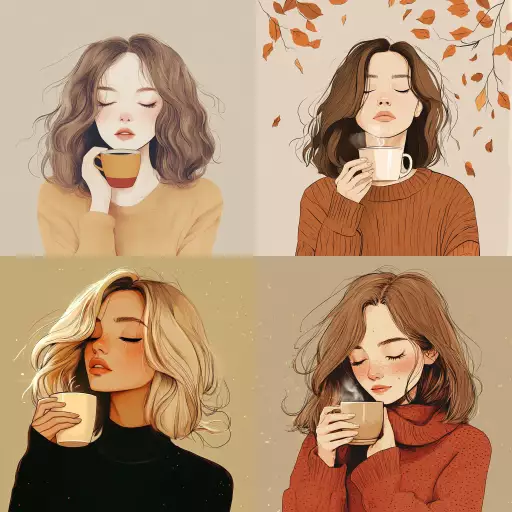Explore the Best AI Image Gallery

Beyond the Canvas: How Wearable Tech is Redefining Artistic Expression
The realm of creativity has always been a space of exploration, where artists push boundaries and redefine whats possible. Now, with the advent of wearable technology, this canvas of innovation is expanding exponentially. From interactive installations to personalized art experiences, wearables are blurring the lines between artist, artwork, and audience, ushering in a new era of artistic expression.
The Rise of Immersive Experiences
Wearable tech allows artists to create immersive experiences that engage multiple senses. Imagine stepping into an installation where your movements trigger light projections or sound sculptures responding to your heartbeat. This fusion of technology and art transcends the traditional passive viewing experience, empowering participants to become active creators within the artwork.
Examples in Action
- Interactive Light Installations: Artists are utilizing wearable sensors to create interactive light installations that react to viewers movements and gestures, transforming spaces into dynamic canvases of color and light.
- Biofeedback Art: Wearables can capture physiological data such as heart rate, breathing patterns, and even brainwaves. This information can then be translated into visual or auditory art forms, creating unique expressions based on the viewers emotional state.
- Augmented Reality (AR) Overlays: AR glasses or smartphones equipped with wearables can overlay digital elements onto the physical world, enriching our perception of surroundings and transforming everyday environments into artistic landscapes.
The Democratization of Art
Wearable technology is also breaking down barriers to entry in the creative industry. Previously inaccessible tools are now within reach of individuals with limited resources. This democratization of art allows for greater diversity of expression, fostering a more inclusive and vibrant creative ecosystem.
Creative Tools at Your Fingertips
- Mobile AR Apps: Artists can utilize mobile apps to create and share 3D sculptures, interactive murals, or even augmented reality experiences without needing specialized software or hardware.
- Wearable Drawing Devices: Haptic feedback gloves or gesture-controlled drawing pads allow artists to translate their physical movements into digital art, opening up new possibilities for sketching, painting, and sculpting.
- DIY Electronics Kits: Wearable technology kits empower individuals to build their own interactive art projects, combining electronics, programming, and creative design to bring unique visions to life.
Ethical Considerations
As with any powerful technology, the integration of wearables into art raises important ethical considerations. Data privacy, user consent, and the potential for manipulation are crucial aspects that require careful attention and ongoing dialogue within the creative community.
Transparency and Control
Artists should be transparent about how they utilize wearable data and ensure users have control over their information. Clear guidelines and informed consent procedures are essential to protect user privacy and build trust.
Bias and Representation
Its important to consider the potential for bias in algorithms and data used by wearable art applications. Ensuring diverse representation and mitigating algorithmic bias are crucial steps towards creating inclusive and equitable artistic experiences.
Future Trends
The convergence of wearable technology and art is just beginning. We can anticipate exciting advancements in areas such as:
- Brain-Computer Interfaces (BCIs): BCIs could allow artists to translate their thoughts and emotions directly into artwork, unlocking a new dimension of creative expression.
- Personalized Art Experiences: Wearables could enable the creation of art that adapts and evolves based on individual user preferences and interactions, offering truly unique and immersive experiences.
- Collaborative Art Making: Wearable technology can facilitate real-time collaboration between artists across geographical boundaries, enabling them to co-create artworks in a shared virtual space.
As wearable technology continues to evolve, its impact on the creative industry will only grow. This convergence of art and technology promises to redefine how we create, experience, and interact with art, pushing the boundaries of imagination and fostering a more inclusive and innovative future for artistic expression.








](https://images.ai-img.art/thumbnails/150/f67d9af3398150f2ab1bcf250717fea134275e2ca896252b54a4d9bb3719f9ac.webp)


















](https://images.ai-img.art/thumbnails/150/bddf3ae4a232290858389b933c866ad3be429ef2e25c23a9f4d7713ed6e44d0b.webp)
](https://images.ai-img.art/thumbnails/150/008b5d5d49667cc2e93a5f8a8adfaa545963da99c39ff0901f5296294636400d.webp)




](https://images.ai-img.art/thumbnails/150/f9584153b4cddd8c9fab611dc10247549b275c59bc173251e37d0935874f9deb.webp)

](https://images.ai-img.art/thumbnails/150/c2c9c48b38fae37f0a457b80b084ed01ba803810fc8f488c8f610c03abc74049.webp)
](https://images.ai-img.art/thumbnails/150/4289d1230b86a96c4d556636c3167bed0ef38f850826549517e4e45db4d87bf7.webp)




